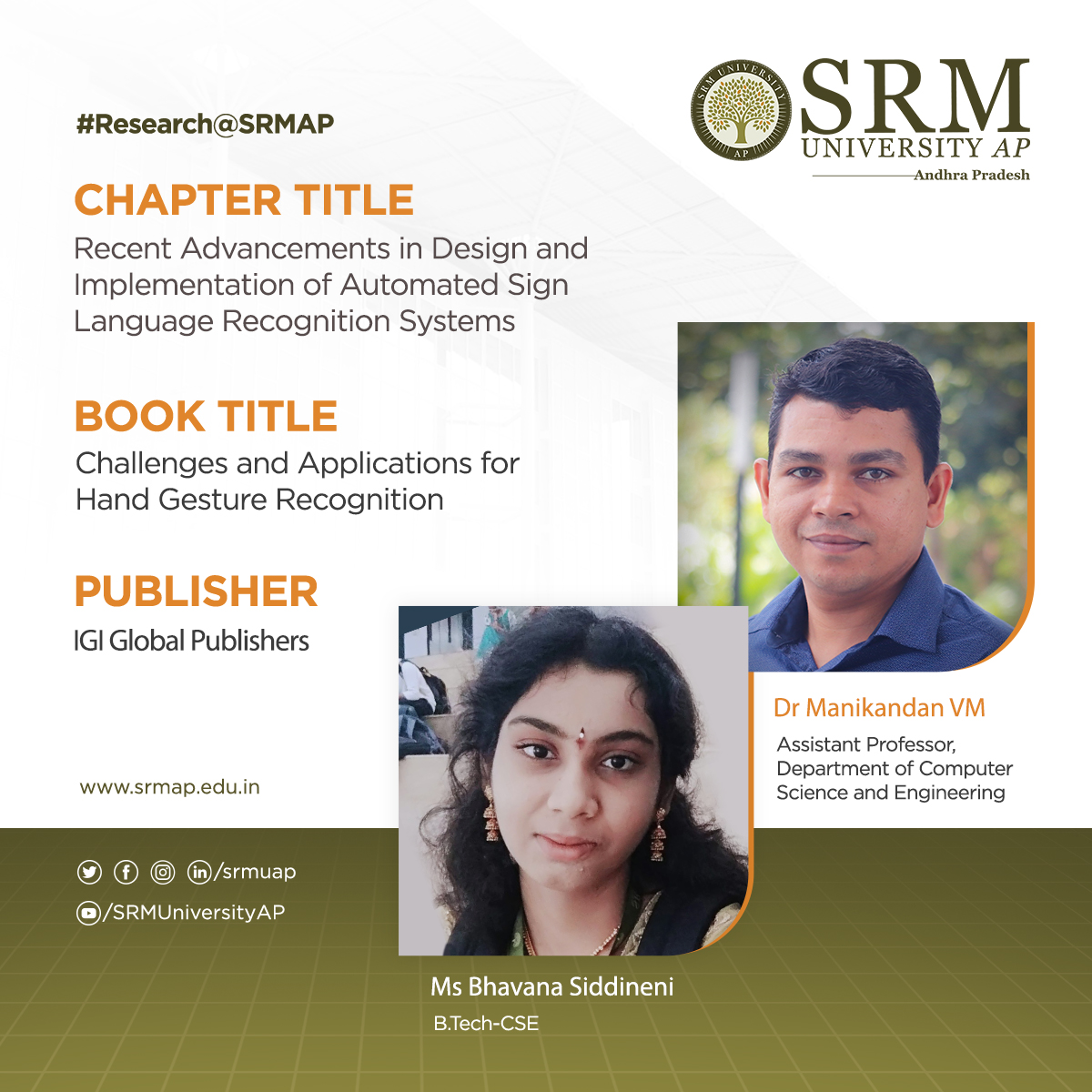 Deaf and mute people have used sign language to communicate their thoughts and feelings for a long time. Since there is no universal sign language, the needy people use country-specific sign languages. An automated sign language recognition system is a universal solution to this impediment. Dr Manikandan V M, Assistant Professor, Department of Computer Science Engineering, and his student, Ms Bhavana Siddineni, have been working in this regard to ease the communication technology. They have published a chapter in the book, ‘Challenges and Applications for Hand Gesture Recognition’. The book is published by IGI Global Publishers, a leading international academic publisher. The chapter is titled “Recent Advancements in Design and Implementation of Automated Sign Language Recognition Systems”.
Deaf and mute people have used sign language to communicate their thoughts and feelings for a long time. Since there is no universal sign language, the needy people use country-specific sign languages. An automated sign language recognition system is a universal solution to this impediment. Dr Manikandan V M, Assistant Professor, Department of Computer Science Engineering, and his student, Ms Bhavana Siddineni, have been working in this regard to ease the communication technology. They have published a chapter in the book, ‘Challenges and Applications for Hand Gesture Recognition’. The book is published by IGI Global Publishers, a leading international academic publisher. The chapter is titled “Recent Advancements in Design and Implementation of Automated Sign Language Recognition Systems”.
Sign language systems in practice are invariably specific to a territory. For example, American Sign Language (ASL) is popularly used by Americans, and Indian Sign Language (ISL) is commonly practised in India. Communication between two people who know the specific sign language is relatively easy. But, if a mute person wants to communicate with another person who is not familiar with sign language, it is a difficult task, and a sign language interpreter is required to translate the signs. This issue motivated the computer scientist to work on automated sign language recognition systems capable of recognizing the signs from specific sign languages and converting them into text information or audio so that the common people can understand them easily.
Through the proposal put forward in the publication, our researchers are planning to design and implement a reliable Automated Sign Language Recognition system in the future. This book chapter will be a useful reference for students who wish to start their research work in the domain of Automated Sign Language Recognition.

